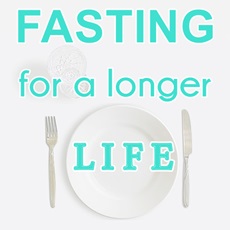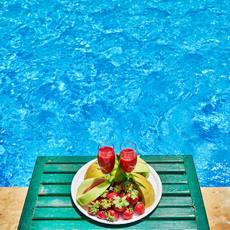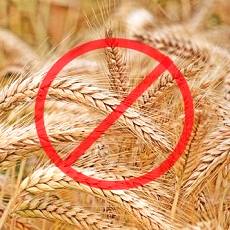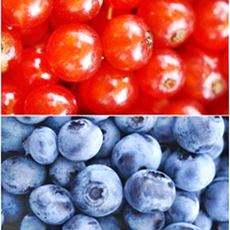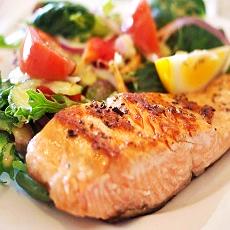Healthy Eating Plan for Weight Loss
Plan your healthy and balanced diet
First published: 16.Oct.2018
Plan your healthy diet
A large proportion of Americans consume highly-processed foods and beverages. This diet is high in sugars, fats, and sodium. They do not eat enough fiber, fruits, and vegetables.
A healthy eating plan addresses this issue by setting out the right amount of nutrients, vitamins, and minerals that your body needs.
Eating a healthy diet will also improve your health, energy, and mood; it will help you achieve and maintain your weight-loss goals.
In this article, we will explain how to prepare your plan, and we will also give you some useful tips on how to get started.
Learn more about how to start your healthy eating plan: nutrients, food groups, the Dos and Don'ts, and much more, plus resources and links to useful information.
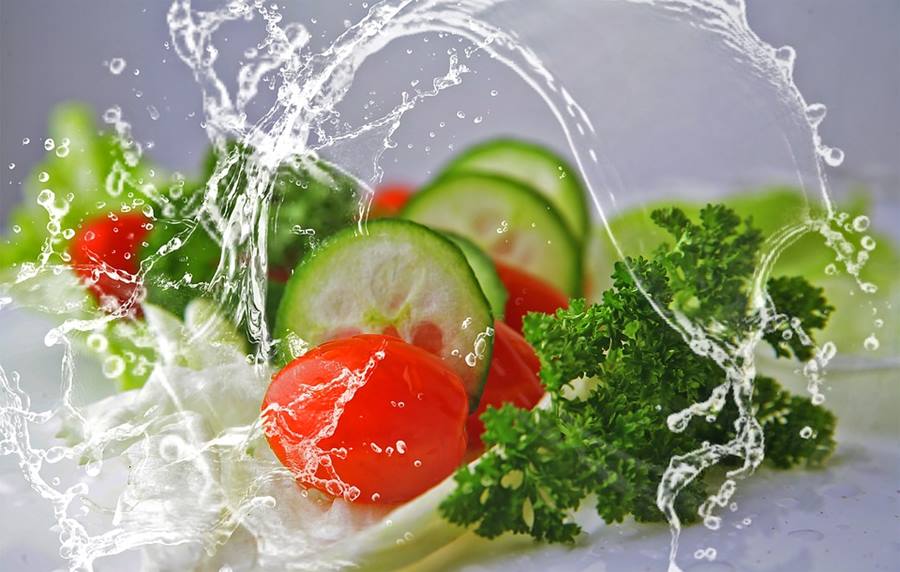
Healthy Eating in a Nutshell
Tips for a Healthy Diet
Healthy eating isn't rocket science, it is common sense backed by scientific evidence. You should eat moderately and include food from each of the five food groups.
Follow these simple six steps for a healthy diet:
- Focus on vegetables, whole grains, and fruit.
- Limit your intake of saturated fats, trans fats (replace them with fat-free or low-fat options).
- Reduce the intake of added sugars and sodium. Cut back on salt and the sodium hidden in processed foods and drinks.
- Eat lean meats, fish, poultry, beans, nuts, seeds, and also eggs.
- Include fat-free dairy products.
- Keep well hydrated.
Count your Calories
Keep an eye on calorie intake by calculating your daily calorie needs (Try our Diet Calorie Calculator).
And remember to control your portion sizes. Smaller is better.
Plan your Calorie Intake
With our Diet Calorie Calculator, you can define your daily calorie requirements based on your age, gender, height, weight, and level of physical activity.
If you aim to lose weight, you should reduce your energy intake below your daily requirements. And increase your energy expenditure (burn more calories by exercising or increasing your level of physical activity).
This will mean that your body will be getting less energy than it needs to function, and it will start burning stored fats to cover the energy gap.
It is often said that 1 pound of fat is equal to 3,500 calories: this is known as Wishnofsky’s Rule; after Max Wishnofsky, who in 1958 calculated that one pound of weight loss was equivalent to burning 3,500 calories. This is not an exact figure, but it is a rule-of-the-thumb value: Cut 3,500 calories and lose a pound of fat.
Calorie Deficit
An average American woman requires around 2,000 calories per day. Therefore, a 25% reduction (500 calorie deficit) would ensure a weight loss of 1 lb per week.
In the case of a man, who needs some 2,700 calories per day, an 18.5% calorie deficit would mean cutting 500 calories from his daily intake to lose the same amount of weight.
Your calorie deficit will depend on how much weight you want to lose and your current weight. In general, for women's weight-loss plans the daily caloric intake ranges from 1,200 to 1,500 calories per day. In the case of men, it is 1,500 to 2,000 calories.
Once you know your daily requirements, you can define what to eat to cover those energy needs.
Food Groups
You should include a variety of different foods from each of the main "food groups". And do so in the right proportion.
Do you know the food groups? Or what they are.
Food groups are categories that combine different foods that share similar in composition and nutrients. That way, they can be easily understood and applied to a diet plan.
For instance, milk, yogurt, and cheese combine calcium and protein. The fruit group provides vitamins and fiber.
The U.S. has defined five main food groups. We explain them in our "Balanced Diet webpage" you can read more following the links below.
Your diet should include foods from these five groups.
You should limit the intake from the following "groups" because they are packed with calories and may also have harmful health effects:
Below is our page on Food Groups with full information on what they are and how much you should consume of each group:
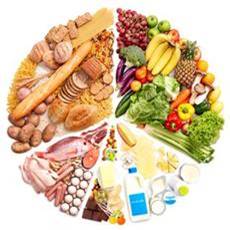
Balanced Diet: Food Groups
Learn which are the foods in each of the Five Food Groups.
What are the correct portion sizes? What foods should you eat occasionally?.
Food Groups around the world
Different countries around the world have their specific food groups. They are variations of the same theme.
The following are just three examples. We list the groups in decreasing order (those in the first places should be eaten in larger quantities than the last ones).
- UK: Fruits and vegetables form one group. "Potatoes, bread, rice, pasta, and other starchy carbohydrates" replace what in the U.S. is classified as "grains". Their protein group includes: "Beans, pulses, fish, eggs, meat, and other proteins", and it includes "oils and spreads" as the fifth group. Added sugars don't figure as a group, and neither do foods high in fats (they shouldn't be part of your diet!)
- Australia also has five food groups, plus "Healthy Fats". Vegetables and legumes/beans; Fruit; Lean meats and poultry, fish, eggs, tofu, nuts and seeds, legumes⁄beans; Grain (cereal) foods, mostly whole-grain and high cereal fiber varieties and milk, yogurt, cheese, and alternatives with reduced-fat.
- Japan's food groups are Grain Dishes, Vegetable Dishes, Fish and Meat Dishes, Milk, Fruits.
Water
The British, Australian, and Japanese Food Groups mention water. Water is critical for good health and can also help you lose weight.
The current recommendations of the National Academy of Medicine (NAM) for adults age +19 are:
- 91 ounces of total water for women (2.7 liters)
- 125 ounces of total water for men (3.7 liters)
Read our webpage on keeping well hydrated:
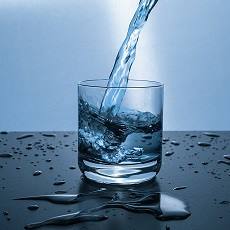
Should I drink eight glasses of water a day?
Conventional wisdom has it that you must drink eight-glasses-of-water-per-day (also known as the "8x8" rule) to keep hydrated. That is eight 8-oz glasses of water. This is a myth that has no scientific basis. But you do need to drink plenty of water to be healthy. Learn how much water is necessary.
Food that you should only eat occasionally
Solid Fats and Added Sugars
Grouped as "Solid Fats and Added Sugars" also known as SoFAS, they are "foods" that add calories without contributing to your nutrition or health. Sure, they taste great and provide processed foods with texture and palatability, but they are not the best options to include in your healthy eating plan.
People dieting tend to "save" calories by cutting their intake of other foods, and do so to be able to eat some sugary or fatty treat.
But, by doing so, they not only cut back on calories, but on the healthy nutrients, vitamins, fiber, and minerals that "real" foods contain and are virtually absent in SoFAS.
If you must eat SoFAS, remain well within the recommended daily limits.
Foods Nutrition Facts labels now include the "Added Sugars" information, and it covers all types of sugars: corn syrup, fructose, dextrose, corn syrup, brown sugar, honey, lactose, maltose, malt syrup, raw sugar, and molasses, just to mention a few.
Solid Fats are oily substances that are solid at room temperatures (unlike oils, which are fluid at room temperature) such as butter, hydrogenated shortening, lard, coconut oil, palm oil, palm kernel oil, and cocoa butter.
Some Solid Fats are also Trans Fats (trans-fatty acids) such as margarine and hydrogenated vegetable oil. (read ingredients on the food labels).
The U.S. Department of Agriculture's (USDA) Dietary Guidelines recommend limiting daily calories from SoFAS to not more than 5 to 15% of your daily calorie intake.
So if your diet allows 1,500 Cal. per day, SoFAS can only add up to 75 to 225 of those Calories.
Salt
The USDA recommends that healthy adults keep their sodium intake to below 2,400 milligrams of sodium per day. That is equivalent to 1 1⁄4 teaspoon of salt (0.21 oz. = 6 g) per day of salt.
Yes, your salt intake is far higher because it isn't only the salt you use when you cook or season your plate; it is also the salt added to the processed foods you buy.
Alcohol
Not listed as a food group and its high-calorie density plus its well known harmful health effects should keep it out of any healthy eating plan. The risks associated with alcohol even in "moderate" quantities outweigh any possible benefits.
Eleven Tips for a healthy diet
The following tips will help you start your road to a healthy diet and keep on track.
Plan for Success
1. Small changes one step at a time
Don't try to change everything at once. Do it in gradual steps. You have to create new habits, and that takes time. A study by Lally et al. (2010) (1) found was that, on average, it takes 66 days before a new behavior becomes automatic (this ranged from 18 to 254 days). So, be patient and stick to your new habits.
2. Make healthy changes
Replace a sugary snack with nuts or raisins or an apple. You will add fiber, healthy vitamins, and minerals and avoid the fat and added sugar in the processed snack.
3. Cook at home
By preparing your food at home, you will know exactly what ingredients you are using and in what quantities. You can regulate your salt intake and avoid hidden SoFAS.
4. Learn. Read the Nutrition Facts Labels
You will be surprised to learn the stuff that goes into the processed foods you buy (hidden trans fats, added sugars, chemicals to thicken and emulsify, and more). Chose the brands you consume based on how healthy they are.
5. Keep Hydrated
Drink water, it is good for your health. It will contribute to satiety and also help you lose weight.
6. Plan your meals
Think ahead and plan your weekly meals. Otherwise, you will revert to eating some quick snack or fast food.
With a plan, you can prepare your shopping list and buy the necessary fresh vegetables, fruit, nuts, whole-grain products, and proteins you need for your healthy meal plan.
Check our website for tasty low-calorie meals:
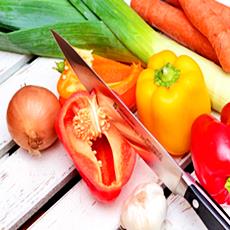
Food & Recipes
Eat Better: Our recipes cover a wide range of tasty nutrient-packed foods. They are full of tips and tricks for cooking great healthy and balanced meals.
7. Vegetables are the key to good health
Add multicolored salads packed with vitamins and fiber. Experiment with different mixes of greens. Raw spinach, romaine arugula, or red cabbage can liven up a salad. Add some blueberries or cucumber. Be creative.
Steam broccoli, Brussels sprouts, and cauliflower; grill zucchini and eggplant, squash, or carrots. Stir fry a mix of thinly sliced veggies using healthy olive oil.
Veggies also count towards your hydration goals (between 80 and 95% of a vegetable's weight is water).
8. Eat slowly and with moderation
Sit down, enjoy your meal, don't eat on the go. Cut down on your serving sizes. Use a smaller plate as it will seem fuller. Take time to eat it will give your stomach time to signal the brain that you are no longer hungry.
9. Don't skip Breakfast
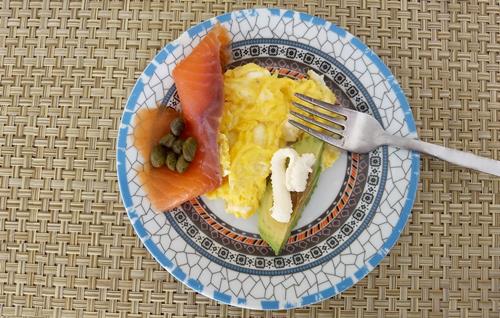
The old saying "Eat Breakfast Like a King, Lunch Like a Prince, and Dinner Like a Pauper", is backed by science (Almoosawi et al., 2016) (2).
- People who eat more in the evening, compared to the morning eaters, tend to be fatter. They have a higher BMI -Body Mass Index.
- Those who don't eat breakfast eat more later in the day and have a higher BMI
Learn more about Breakfast and weight loss (to skip or not to skip?)
10. Phase-out "unhealthy foods"
Eliminate the SoFAS and alcohol gradually: cut back on portion sizes or consume them less frequently. By doing it slowly, you will avoid unnecessary cravings and binge eating episodes.
11. Complement the diet with exercise
Burn more calories and improve your fitness by sitting less and moving about more at work and home. Park your car further away in the parking lot, so you will have to walk more. Use the stairs instead of the elevator. Stand up when you use the phone.
Go for a walk or ride your bike.
Aim at a minimum of 30 minutes of exercise a day for 5-days of each week.
References and Further Reading
(1) Lally et al. (2010). How are habits formed: Modelling habit formation in the real world. European Journal of Social Psychology 2010;40(6):998-1009
(2) Almoosawi S, Vingeliene S, Karagounis LG, Pot GK., (2016). Chrono-nutrition: a review of current evidence from observational studies on global trends in time-of-day of energy intake and its association with obesity, Proceedings of the Nutrition Society. June 22 2016
About this Article
Healthy Eating Plan, A. Whittall
©2018 Fit-and-Well.com, 16.Oct.2018. Updated. 28.Dec.2020. https://www.fit-and-well.com/diet-food/healthy-eating-plan.html
Tags: healthy eating plan, plan your healthy diet, food groups, healthy eating.
This Webpage
Subject: Fit-and-Well.com. Healthy eating plan. Learn about food groups, calorie deficit, and how to eat a balanced diet with a variety of foods from each food group. Keep hydrated, exercise, and control your calorie intake. Follow our eleven tips for a healthy eating plan.

